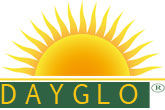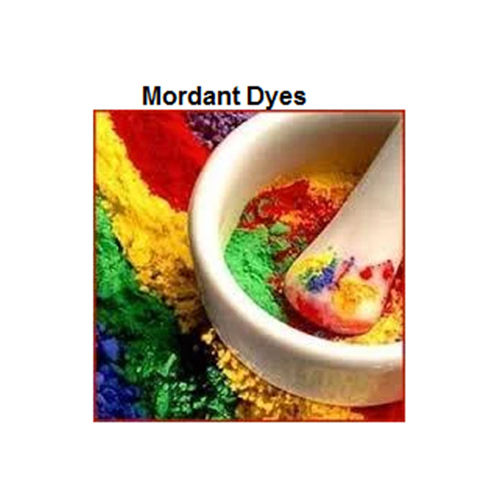Mordant Dyes Price And Quantity
- 100 Kilograms
- 200.00 - 400.00 INR/Kilograms
Mordant Dyes Product Specifications
- Acid Dye
Mordant Dyes Trade Information
- 5000 Kilograms Per Month
- 15 Days
Product Description
Mordant dyes are those dyes which require a mordant in their application and which upon combination with the mordant deposit insoluble color on the substrate, e.g., dyes with metal chelating groups. Like the name suggests these dyes require a mordant. Mordants are substances of organic or inorganic origin which combine with the coloring matter and are used to fix the same in the production of the color. For the purpose of this class, such materials as oils and sulfonated oils, soaps, fats and higher acids, are not generally considered as mordants, but as coming within the scope of assistants in dyeing.
The mordant substances include such acids as tannic acid, sumac, gall nuts, bark extracts, oleic and stearic acids, and Turkey red oil and metallic substances such as various combinations or soluble salts of chromium, aluminum, iron, copper, and tin. The latter, the metallic mordants, are more used than the acid mordants. Mordant improves the fastness of the dye on the fibre such as water, light and perspiration fastness. The choice of mordant is very important as different mordants can change the final colour significantly. Most natural dyes are mordant dyes and there is therefore a large literature base describing dyeing techniques. Dyes are generally defined along the lines of being coloured, aromatic compounds that can ionise. Although this definition infers that ionic interaction with oppositely charged tissue constituents is the norm, there are exceptions. Some dyes require the presence of a metal to properly develop their colour or staining selectivity. These are termed mordant dyes. The Colour Index uses this as a classification and naming system. Each dye is named according to the pattern: mordant + base colour + number.
These dyes are thereby specifically identified as dyes of the stated colour, and whose primary staining mechanism requires the presence of metal atoms. Note that this is a functional and colour classification. It contains no chemical information neither does it imply that dyes with similar names but unique numbers are in any way related. It should also be noted that the classification refers to the primary mechanism of staining. Other mechanisms may also be possible. The most commonly used mordant dyes have hydroxyl and carboxyl groups and are negatively charged, i.e. anionic. It is convenient to view these as a specialised subgroup of acid dyes. Some other mordant dyes may possess amino groups, and are cationic overall. Despite this, they must still have hydroxyl or carboxyl groups, since lake formation requires it.
Mordant dyes can usually stain by ionic interaction in the same way as other ionisable dyes. The colour is often pale, sometimes so pale that the results have no value. It is often noted that when a mordant dye forms a lake with a metal, there is a strong colour change. This is because metals have low energy atoms. The incorporation of these low energy atoms into the delocalised electron system of the dye causes a bathochromic shift in the absorption. It is this delocalised electron system which is fundamentally responsible for colour in dyes. Since different metal atoms have differing energy levels, the colour of the lakes may also differ.
The most commonly used mordant dye is undoubtedly hematein (natural black 1), whose status as a natural product supercedes its mode of dyeing, apparently. Others are eriochrome cyanine R (mordant blue 3) and celestine blue B (mordant blue 14), both used as substitutes for alum hematoxylin but with a ferric salt as the mordant. Alizarin red S (mordant red 3) is valuable for the demonstration of calcium, particularly in embryo skeletons.
| Product Name | Colour | C.I. Name | C.I.No. | Cas No. |
|---|---|---|---|---|
| Daymord Yellow G | Mordant Yellow 1 | 584-42-9 | ||
| Daymord Yellow H | Mordant Yellow 10 | 6054-99-5 | ||
| Daymord Yellow MAC | Mordant Yellow 12 | 6470-98-0 | ||
| Daymord Yellow RSW | Mordant Yellow 20 | 7/4/6471 | ||
| Daymord orange R | Mordant orange 1 | 14030 | 2243-76-7 | |
| Daymord orange 3R | Mordant orange 2 | 14040 | 6408-37-3 | |
| Daymord orange GR | Mordant orange 6 | 26520 | 3564-27-0 | |
| Daymord orange RT | Mordant orange 10 | 6406-37-7 | ||
| Daymord orange 37 | Mordant orange 37 | 18730 | 6441-98-1 | |
| Daymord Red WR | Mordant Red 3 | 130-22-3 | ||
| Daymord Bordeaux BR trade | Mordant Red 5 | 3564-26-9 | ||
| Daymord Red B | Mordant Red 7 | 3618-63-1 | ||
| Daymord Red BSW | Mordant Red 9 | 1839-22-2 | ||
| Daymord Red 11 | Mordant Red 11 | 72-48-0 | ||
| Daymord Brill Red BR | Mordant Red 15 | 6359-29-1 | ||
| Daymord Red 5G | Mordant Red 19 | 1934-24-3 | ||
| Daymord Blue 2BT | Mordant Blue 1 | 1796-92-5 | ||
| Daymord Blue S2R | Mordant Blue 9 | 14899 | 3624-68-8 | |
| Daymord Blue B | Mordant Blue 13 | 16680 | 1058-92-0 | |
| Daymord Green 17 | Mordant Green 17 | 17225 | 6564-28-1 | |
| Daymord Green 28 | Mordant Green 28 | 17220 | 6222-44-2 | |
| Daymord Black A | Mordant Black 1 | 15710 | 3618-58-4 | |
| Daymord Black 2BP | Mordant Black 1 | 3618-58-4 | ||
| Daymord Black BC | Mordant Black 3 | 3564-14-5 | ||
| Daymord Black PV | Mordant Black 9 | 16500 | 2052-25-7 | |
| Daymord Black TEC | Mordant Black 11 | 14645 | 1787-61-7 | |
| Daymord Black Grey B | Mordant Black 13 | 1324-21-6 | ||
| Daymord Black 15 | Mordant Black 15 | 3179-84-8 | ||
| Daymord Black G2BS | Mordant Black 17 | 15705 | 2538-85-4 | |
| Daymord Brown EBN | Mordant Brown 1 | 20110 | 3564-15-6 | |
| Daymord Brown 13 | Mordant Brown 13 | 13225 | 6054-80-4 | |
| Daymord Brown 15 | Mordant Brown 15 | 14870 | 8006-50-4 | |
| Daymord Brown TV | Mordant Brown 33 | 13250 | 3618-62-0 | |
| Daymord Brown 35 | Mordant Brown 35 | 14765 | 5858-48-0 | |
| Daymord Brown MB | Mordant Brown 48 | 6232-53-7 | ||
| Daymord Brown 69 | Mordant Brown 69 | 20120 | 8/8/5850 | |
| Daymord Brown79 | Mordant Brown79 | - | 3567-69-9 |
We only deal in Foreign Markets.







